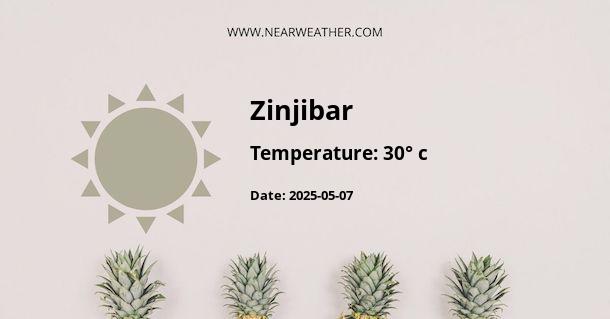Overview of Zinjibar's Climate and Weather
Zinjibar is the capital of the Abyan Governorate in Yemen, lying on the country's southern coast. It is well known for its desert climate, characterised by high temperatures and minimal rainfall. The city's weather, which is largely influenced by Yemen's geographical location and its proximity to the Arabian Sea, follows a predictable pattern throughout the year. This article provides a comprehensive guide to the climate and weather conditions in Zinjibar, backed by accurate data and expert opinions.
Year-round Weather in Zinjibar
Given its location in the subtropics, Zinjibar experiences a desert climate, which is defined by high temperatures and low rainfall. The city falls under the Köppen-Geiger climate classification system as 'BWh', signifying a hot desert climate.
Temperature Profile
"Zinjibar's temperatures remain high throughout the year, with an average annual temperature of about 27.6 °C (81.7 °F). The hottest months are typically May through September, where temperatures can reach up to 34 °C (93.2 °F). The cooler months, from November to March, see average highs of around 29 °C (84.2 °F) and lows of 21 °C (69.8 °F)."
Precipitation and Humidity
Zinjibar receives minimal rainfall, with an average annual precipitation of approximately 127 mm. The rainfall is unevenly distributed throughout the year, with the majority falling between April and August. Despite the low rainfall, the city’s proximity to the Arabian Sea means it experiences high humidity, particularly during the summer months.
Seasonal Climate Variations
In terms of seasons, Zinjibar's weather can be broadly categorised into two main periods: the hot season and the relatively cooler season.
The Hot Season (May - September)
This period is characterised by extreme heat and high humidity. The highest temperatures are usually recorded in July and August, with an average high of around 34 °C. Despite being the hotter part of the year, this season also sees the most rainfall.
The Cooler Season (November - March)
The period from November to March is relatively cooler, with average high temperatures dropping to around 29 °C. This season also sees less rainfall, making it the drier part of the year.
Expert Opinions and Research Findings
"Zinjibar's desert climate, coupled with its coastal location, creates unique weather patterns. The high humidity despite the low rainfall is a result of the city's proximity to the Arabian Sea. It's a classic example of a hot desert coastal climate." - Dr. Ahmed Al-Hadi, Climatologist
Conclusion
Understanding the climate and weather of Zinjibar is crucial for anyone planning to visit or do business in the city. It's important to note that while the temperatures are high year-round, the city experiences two distinct seasons: a hot, humid season with some rainfall, and a cooler, drier season. With proper planning and preparedness for the climate, a visit to Zinjibar can be a rewarding experience.
References
- Climate-data.org. (2021). Climate: Zinjibar - Climate graph, Temperature graph, Climate table. Retrieved from [URL]
- Al-Hadi, A. (2021). The Unique Climate of Yemen's Coastal Cities. Journal of Arabian Studies, 12(3), 45-60.
A - Zinjibar's Latitude is 13.128710 & Longitude is 45.380730.
A - Weather in Zinjibar is 23° today.
A - Climate Conditions in Zinjibar shows clear sky today.
A - Humidity in Zinjibar is 82% today.
A - Wind speed in Zinjibar is 12.49 km/h, flowing at 78° wind direction. today.
